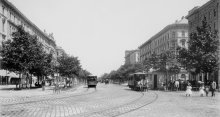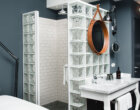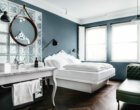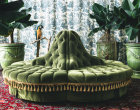Elegance Made Immortal: The Horse in the Grand Ferdinand Lobby
Elegant and modern, traditional but just a little bit different, that’s the Grand Ferdinand.
The independent hotel’s character becomes apparent in the details, from the large Lobmeyr chandeliers in the lobby to the champagne bar in the rooms, from the horsepower hiding in the motor pool to the remnant of horsepower visible in the lobby.
That remnant of horsepower in the lobby of the hotel comes in the form of a taxidermied horse. Majestic and elegant, it is posed right under the Lobmeyr chandelier. The noble beast fits the Grand Elegance theme of the Grand Ferdinand perfectly.
At the zenith of the Vienna Ring Boulevard, the street where the Grand Ferdinand is located, horses were still more widely in use than automobiles. Owning horses alluded to wealth, influence and mobility, so people of distinction were seen riding through the streets of Vienna on horseback or in horse-drawn carriages. The steed at the Grand Ferdinand serves as a reminder of that time.
Deyrolle: A master in the field of taxidermy
The taxidermied horse at the Grand Ferdinand was created by Deyrolle, a French master taxidermist. Taxidermy is cherished as an art form. Oftentimes, the preserved animals are used as decorations or are simply a way to keep a beloved pet around. However, taxidermy also plays a big role for science and teaching purposes, in museums, and to preserve endangered or extinct species.
In the 20th century, Deyrolle was a Parisian institution. Today, it’s still one of the most famous taxidermy shops in the world. Jean-Baptiste Deyrolle founded the company in 1831 and was soon known for his excellent entomology specimens. In 2001, Louis Albert de Broglie bought the company and refurbished the shop at rue du Bac.
Today, Deyrolle offers not just a wide array of taxidermied animals, but also scientific materials, as well as mineral and fossil collections. Furthermore, Deyrolle supplies Parisian schools with educational materials.
Delight without remorse
Don’t worry: The Grand Ferdinand horse did not have to die for the art of taxidermy. The specimens Deyrolle works with are almost always animals that have died of old age or illness. This means that you get to appreciate the masterful art of taxidermy and the beautiful sight of the horse in the Grand Ferdinand lobby without feeling bad about it.







